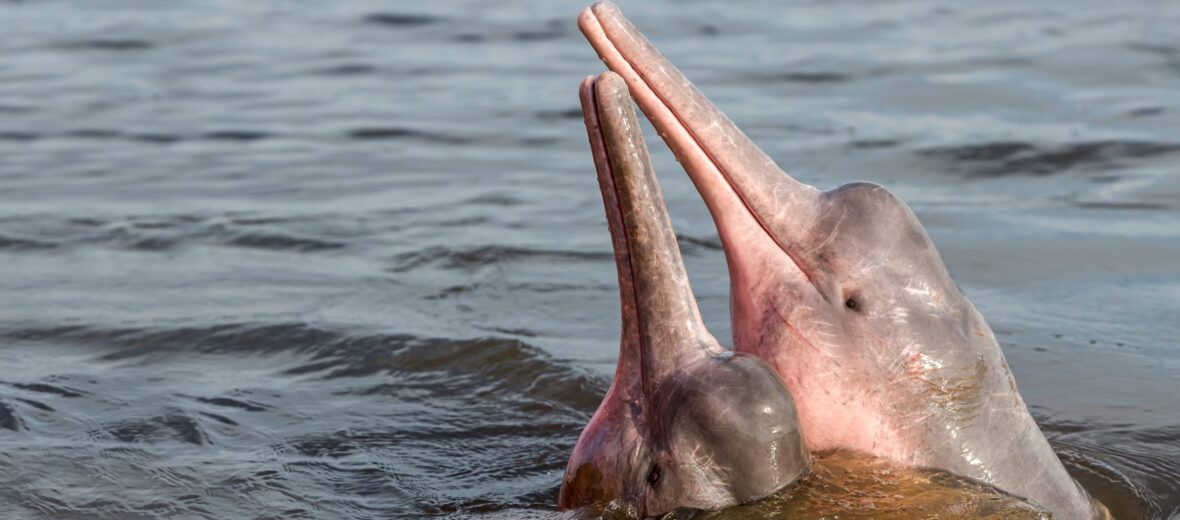
There are many species of dolphins in the world. The most unique, by far, is the pink river dolphin. These dolphins begin life as a gray color and slowly turn pink as they age. They can be anywhere from predominantly gray with a few pink spots, to nearly as pink as a flamingo. When the dolphins get excited, they can flush bright pink, like a human blushing. These beautiful dolphins are listed as Endangered by the IUCN due to habitat destruction, overfishing, pollution, and civil unrest; and their numbers are decreasing.
First the Stats…
Scientific name: Inia geoffrensis
Weight: Up to 190 lbs.
Length: Up to 6.9 feet
Lifespan: Up to 18 years
Now on to the Facts!
1.) These dolphins live in the murky fresh water of the Amazon.
2.) They are also called Boto, pink dolphins, Amazon river dolphin, Amazon dolphin, and bufeo.
3.) Pink river dolphins have the largest bodies and brains of any freshwater dolphin.
4.) Typically, these creatures are solitary, but can be occasionally be found in small pods of 2 – 4 individuals.
5.) They’re frequently seen swimming upside down. It is thought that this is to help them see the river bottom better.
But wait, there’s more on the pink river dolphin!
6.) The pink river dolphin has unfused vertebrae in their neck. This allows them to turn their heads up to 180 degrees.
7.) Turning is a breeze as they can swim forward with one flipper while paddling backwards with the other.
Did you know…?
A native legend about these critters states that during the evening, the dolphins morph into attractive men and try to seduce the women of the villages.
8.) It is considered bad luck to harm them, and even worse luck to eat them. This may have helped in their conservation over the years.
9.) Pink dolphins have large snouts with bristle hairs on the end that are specially adapted for feeding on the river-bottom.
10.) Caiman, jaguars and anacondas have been known to catch dolphins on occasions!
But wait, there’s still more on the pink river dolphin!
11.) Mercury pollution is big problem for the Bolivian river dolphin from mining runoff, as catfish are a common prey item for these dolphins and catfish end up consuming mercury while eating.
12.) Amazon River dolphins are typically very friendly. There have been numerous stories among tribes in the Amazon of people being pushed ashore by dolphins when they were in the water and perceived as in need of help.
Now a Short Pink River Dolphin Video!
Also, check out the Critter Science YouTube channel. Videos added frequently!
Want to suggest a critter for me to write about? Let me know here.



